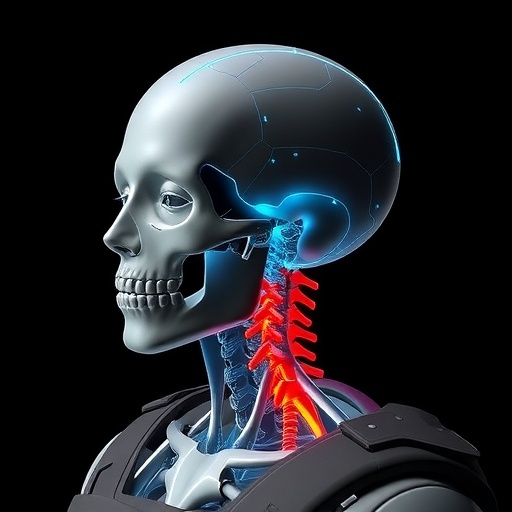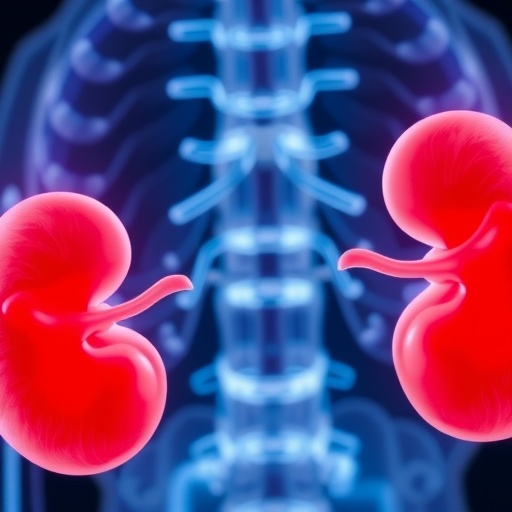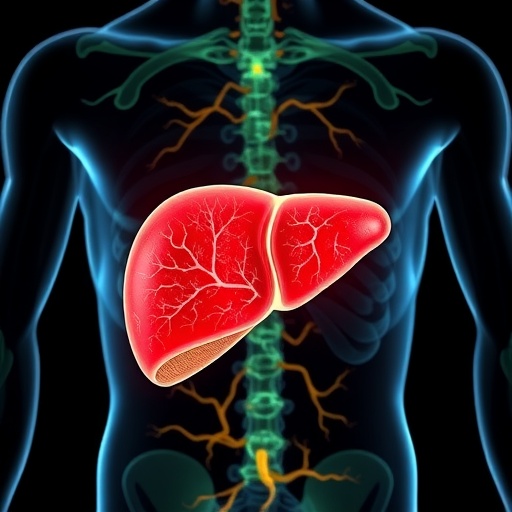
In a groundbreaking advancement for military health, the research community has made significant strides in understanding the complex biomechanical interactions faced by male warfighters through the introduction of the I-PREDICT 50th Percentile Male Warfighter Finite Element Model. This innovative approach centers on enhancing the accuracy of injury predictions associated with head and neck trauma, a critical concern for soldiers exposed to explosive blasts and high-velocity impacts on the battlefield. The model’s development represents a monumental shift in how researchers can simulate real-world combat situations and the consequent mechanical forces at play.
At the heart of this research is the intricate process of creating a finite element model that accurately reflects the anatomical and physiological properties of the human head and neck. The team led by Norton and Crimmins meticulously gathered anatomical data through advanced imaging techniques, allowing them to construct a highly detailed representation of a 50th percentile male warfighter. This model serves as the baseline for testing various impact scenarios that soldiers might endure during combat, providing a more comprehensive understanding of potential injuries that may occur.
Notably, the development of finite element analysis as a tool in bioengineering has provided unprecedented opportunities to simulate a wide range of physical forces and their effects on human tissue. By integrating material properties derived from biological tissues, researchers were able to characterize how these tissues react to different stressors, from blunt impacts to rapid acceleration and deceleration forces. The use of this technique not only enhances the fidelity of the model but also paves the way for more effective protective gear and medical treatments designed specifically for military applications.
In the validation phase, the I-PREDICT model underwent rigorous testing against experimental data obtained from actual impact scenarios. The validation process is crucial, as it confirms that the predictions made by the finite element model correlate closely with real-world results. By leveraging biomechanical testing and using cadaveric models, researchers were able to fine-tune the algorithm, thus ensuring that injury predictions are both reliable and representative of potential battlefield conditions.
In addition to its potential applications in military settings, the I-PREDICT model could provide valuable insights for the civilian sector as well. Understanding head and neck injuries is relevant in numerous sports and recreational activities, where athletes frequently face similar risks. The knowledge gleaned from this research could lead to significant advancements in protective equipment, injury prevention strategies, and rehabilitation protocols in various high-impact activities.
Moreover, the implications of this research extend into the realm of policy and combat readiness within military ranks. Equipped with this model, military leadership can make informed decisions regarding the design of combat helmets and protective equipment, potentially influencing procurement policies and training methods. Ultimately, this work has the power to directly impact the safety and longevity of soldiers while navigating the rigors of combat operations.
The researchers also highlight the importance of interdisciplinary collaboration in achieving these results. The seamless integration of fields such as biomechanics, computer science, and engineering not only enriched the model’s development but also fostered an environment of innovation. Such collaboration is essential as the scientific community continues to push the boundaries of traditional methodologies to accommodate the evolving challenges faced by modern warfighters.
Another noteworthy aspect of the research lies in the growing field of personalized medicine. By establishing a model based on the average male warfighter, future iterations could evolve to consider individual anatomical variations. This could lead to more tailored protective solutions that consider the diverse range of body types encountered within military populations.
Through the I-PREDICT project, researchers are laying the groundwork for upcoming innovations that benefit not only military personnel but also civilian emergency responders. Firefighters, law enforcement officers, and emergency medical technicians often find themselves in high-risk scenarios that require them to wear protective gear while executing life-saving maneuvers. Insights from the model could thus extend into developing gear that is functionally optimized for performance during high-stakes situations.
As this research unfolds, the complexity and breadth of the implications become increasingly apparent. The novel finite element model represents an ambitious attempt to bridge the gap between theoretical biomechanics and practical applications on the battlefield. Revising the standards for safety and performance in military gear, while also enhancing methods for injury assessment and management, will be paramount as the military seeks methods to bolster the safety and effectiveness of its personnel.
The future of the I-PREDICT model rests in ongoing refinement and expansion of its applications. Continuous research efforts aimed at incorporating even more anatomical variations and injury mechanisms will enhance its predictive accuracy and relevance. The potential for collaborative projects between academia, military institutions, and private industry is a promising avenue through which this model can evolve, ultimately advancing both military and civilian safety protocols.
Ultimately, the I-PREDICT model signifies a major milestone in the ongoing quest to make headway against the challenges posed by combat-related injuries. By focusing on the head and neck, researchers are addressing a critical area of concern that has profound implications on the health and performance of soldiers. As advancements continue, it is not only the duty of the scientific community to disseminate this knowledge but also a responsibility that can lead to real-world solutions aimed at protecting those who serve and protect us.
With each development stemming from the I-PREDICT initiative, the hope is to create a future where the risks associated with extreme physical demands are mitigated through technology, research insights, and improved protective measures. As these innovations unfold, the framework established here could inspire a new wave of model development across various fields, showcasing the relevance of computational modeling in addressing urgent human health challenges.
Subject of Research: Head and neck trauma assessment in military personnel through finite element modeling.
Article Title: The I-PREDICT 50th Percentile Male Warfighter Finite Element Model: Development and Validation of the Head and Neck.
Article References:
Norton, N.M., Crimmins, S.A., Hostetler, Z.S. et al. The I-PREDICT 50th Percentile Male Warfighter Finite Element Model: Development and Validation of the Head and Neck.
Ann Biomed Eng (2025). https://doi.org/10.1007/s10439-025-03814-y
Image Credits: AI Generated
DOI:
Keywords: Finite Element Model, Head Trauma, Neck Injury, Military Health, Biomechanics.
Tags: 50th percentile male warfighter modeladvanced imaging techniques in bioengineeringanatomical modeling for combat scenariosbiomechanics of head and neck injuriesexplosive blast impact analysisfinite element modeling in biomechanicshead and neck trauma in soldiersinjury prediction for warfightersmilitary health innovationsreal-world combat simulationsresearch in military biomechanicssimulation of combat-related injuries




